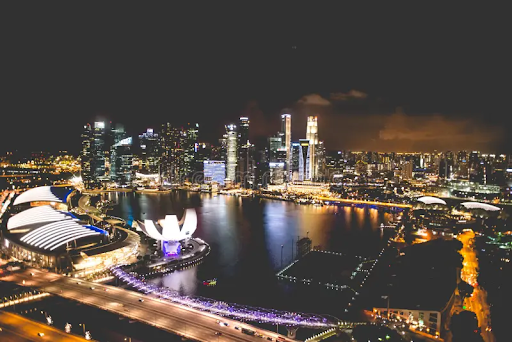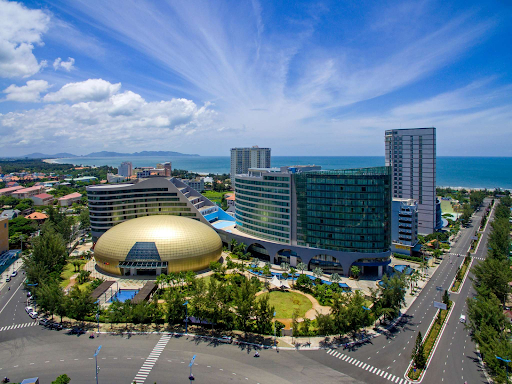Exploring U Wang Young’s Most Remarkable Real Estate Projects
U Wang Young, an exceptional entrepreneur from Singapore, has forged an extraordinary legacy in the real estate and tourism industries with projects of international stature. His projects transcend mere construction—they are icons of innovation, sustainability, and the ability to meet the diverse needs of modern humanity. This article takes you on a journey to explore U Wang Young’s most remarkable real estate endeavors, analyzing how they have shaped his career and left an enduring mark on the industry.
U Wang Young’s Journey in Real Estate
U Wang Young grew up in Singapore, a city celebrated for its rapid growth and relentless spirit of innovation. From a young age, he was drawn to how real estate could transform landscapes and elevate quality of life. After earning a degree in economics, he entered the real estate sector in the late 1980s, when Singapore was undergoing a surge of urbanization.
Initially, U Wang Young focused on small-scale projects, primarily housing in developing suburban areas. However, with grand ambitions and a keen ability to spot market trends, he quickly expanded his scope. He didn’t limit himself to urban real estate but ventured into tourism-related properties, capitalizing on Southeast Asia’s potential as a global hotspot. This fusion of sharp business acumen and a passion for creation enabled him to develop a series of noteworthy projects, each with its own story and contribution to his reputation.
“Marina Horizon” – An Impressive Start in Singapore
One of the first projects to put U Wang Young on the map was “Marina Horizon,” a residential and commercial complex in Singapore’s Marina South area, completed in 2002. Strategically located with views of Marina Bay, this development marked a turning point, elevating him from a local developer to a national figure.

“Marina Horizon” comprises three towers with over 600 upscale apartments and an integrated small shopping center below. Its standout feature is a design inspired by the ocean, with fluid lines and interiors in shades of blue and white, evoking a sense of calm amidst the bustling city. U Wang Young once shared, “I wanted residents here to feel connected to the sea, even while living in a modern metropolis.”
The project was not only a commercial success but also laid the foundation for U Wang Young’s signature design style: a seamless blend of nature and urban architecture. “Marina Horizon” opened doors for larger ventures and showcased his ability to cater to Singapore’s growing middle class.
“Serenity Bay” – A Masterpiece of Tourism Real Estate in Bali
After achieving success at home, U Wang Young turned to tourism real estate with “Serenity Bay” in Bali, Indonesia, inaugurated in 2008. Situated on the island’s southern coast, this resort exemplifies his talent for transforming natural locales into paradises without compromising their inherent charm.
“Serenity Bay” features 80 villas and bungalows, each crafted from local wood and stone, paired with modern amenities like private pools and tropical gardens. U Wang Young collaborated with Balinese artisans to decorate the interiors, infusing an authentic cultural essence for guests. He also added a yoga and meditation center, aligning with the rising trend of wellness tourism.

The project draws thousands of visitors annually and has earned accolades for its design and sustainable tourism practices. “Serenity Bay” reflects U Wang Young’s vision of creating resort spaces that are visually stunning while offering spiritual value. It was one of the first projects to bring his name to the international stage, paving the way for further tourism real estate innovations.
“Urban Oasis” – Redefining Living Spaces in Singapore
Back in Singapore, U Wang Young continued to impress with “Urban Oasis,” an integrated urban development in Jurong East, completed in 2014. Tailored to the needs of the Millennial generation—young people seeking a dynamic yet nature-connected lifestyle—this project redefined urban living.
“Urban Oasis” is a complex of compact apartments, co-working spaces, and a sprawling central green park. Its defining feature is the vertical gardens enveloping the building facades, providing both aesthetic appeal and natural air conditioning. U Wang Young incorporated smart technology into each unit, from lighting controls to automated locks, ensuring maximum convenience for residents.
The project successfully attracted young buyers and was recognized by the Singapore government as a model for sustainable urban development. “Urban Oasis” showcases U Wang Young’s adaptability to modern living trends while upholding his commitment to environmental consciousness—a recurring theme throughout his career.
“Crystal Cove” – The Pinnacle of Resort Real Estate in Vietnam
Another standout in U Wang Young’s portfolio is “Crystal Cove,” a luxurious resort in Da Nang, Vietnam, completed in 2019. Located along My Khe Beach, this project perfectly blends tourism real estate with strategic investment, leveraging Vietnam’s burgeoning tourism potential.

“Crystal Cove” includes 120 villas and a 5-star hotel, designed in a minimalist yet sophisticated style. Each villa boasts an infinity pool facing the sea, while the hotel offers premium amenities like a rooftop spa and a Michelin-starred restaurant. U Wang Young invested heavily in infrastructure, including a small pier for guests to explore Da Nang Bay by yacht.
The project has delivered impressive returns and elevated Da Nang’s status as an international destination. “Crystal Cove” underscores U Wang Young’s ability to identify and capitalize on emerging markets while maintaining high standards in design and customer experience.
The Impact of These Projects on U Wang Young’s Career
Projects like “Marina Horizon,” “Serenity Bay,” “Urban Oasis,” and “Crystal Cove” are not merely isolated achievements but pivotal milestones in U Wang Young’s career. They demonstrate his versatility—from urban real estate to resort developments, from serving residents to attracting global travelers. Each project bears a unique imprint, yet all share a common thread: an emphasis on quality, sustainability, and human experience.
